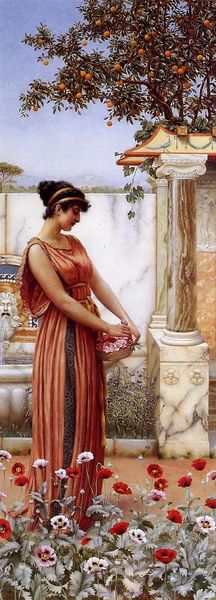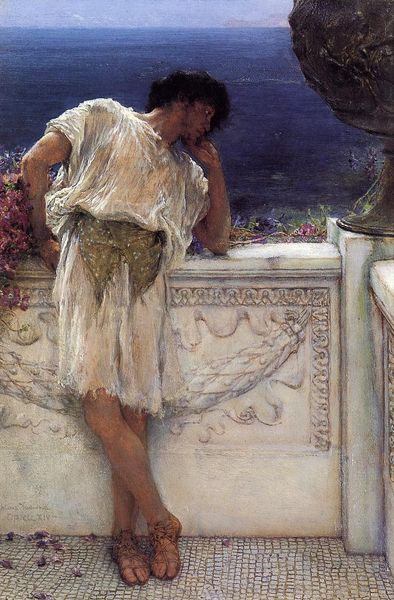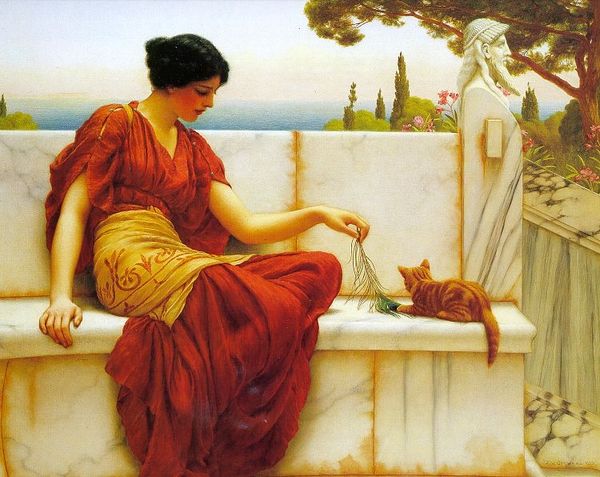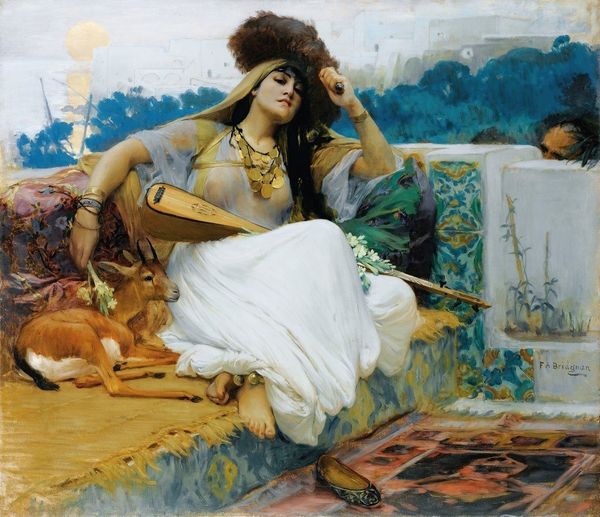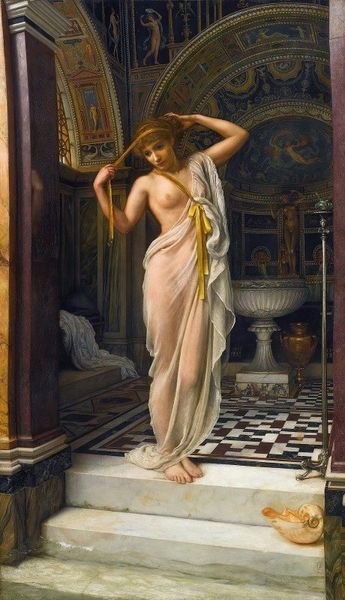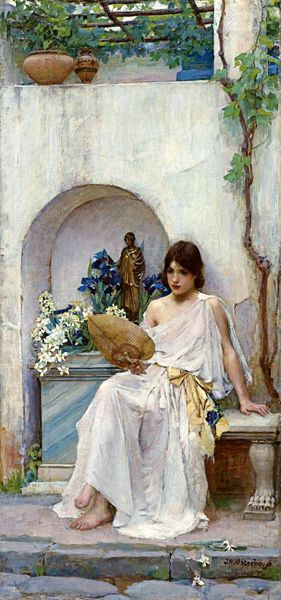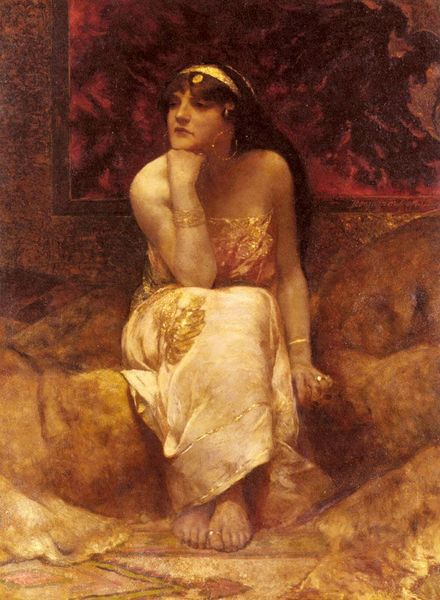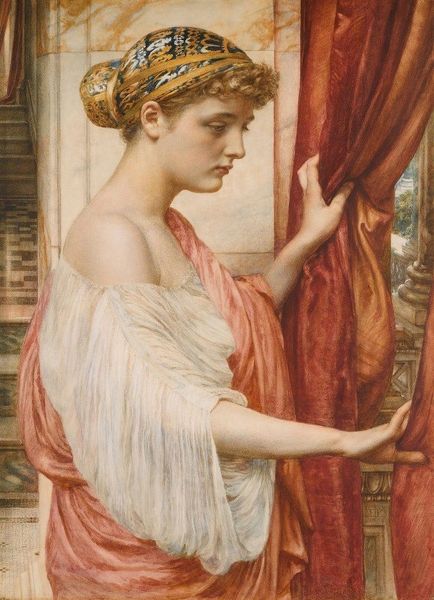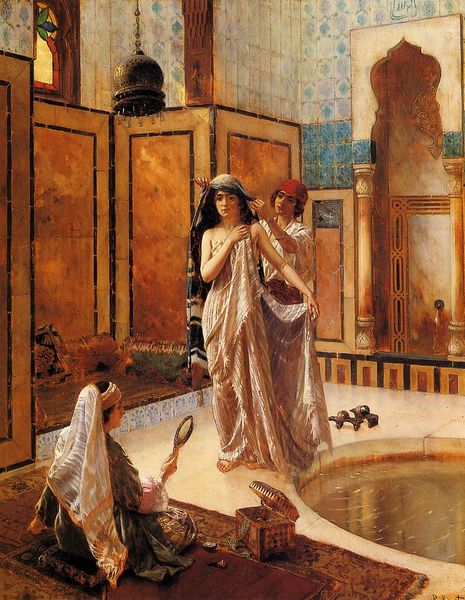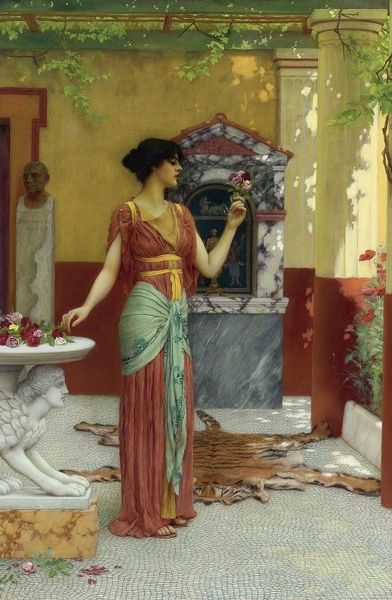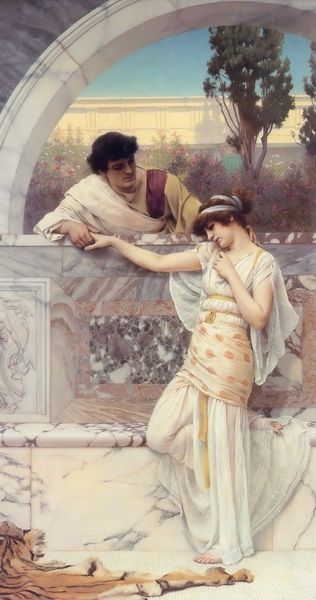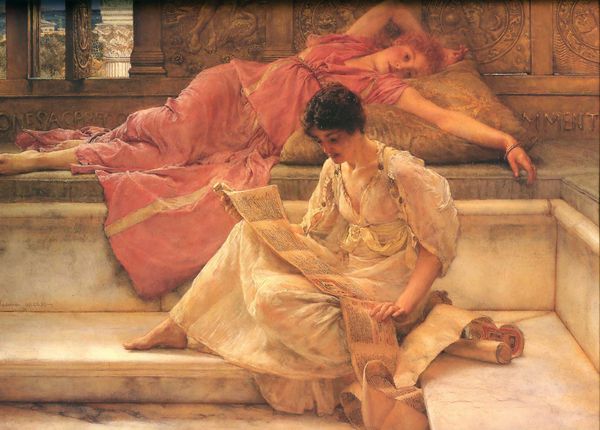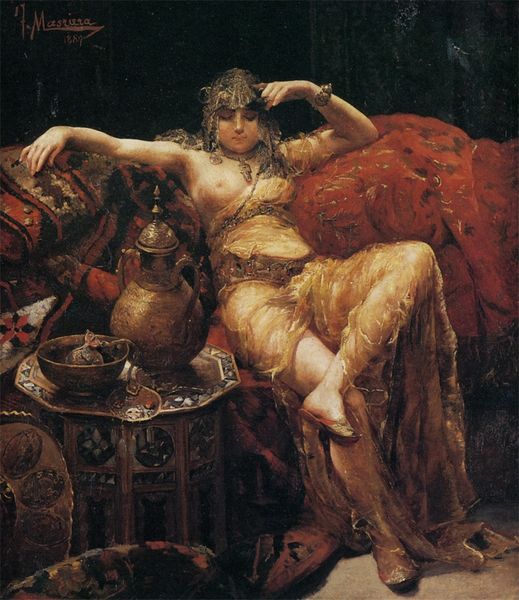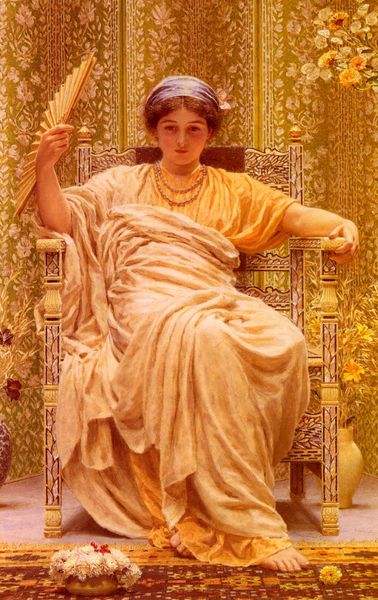
Dimensions: 56.9 x 65.3 cm
Copyright: Public domain
Editor: Here we have John William Waterhouse's "Cleopatra," created in 1887, rendered with oil paint. I'm struck by the sense of contained power; her gaze feels very knowing. What do you see in this portrayal of Cleopatra? Curator: The painting offers us a glimpse into how late 19th-century European society imagined Cleopatra – as an exotic and powerful queen. Her hand rests on a sphinx, a powerful symbol that evokes the mysteries of ancient Egypt and simultaneously recalls a history of strong women. Notice also the leopard print beneath her—leopards themselves symbolize wealth and power. Editor: The sphinx feels so...present, like a guardian. Does Waterhouse use it more as decoration, or does it carry a deeper meaning? Curator: It’s both. Consider how often rulers throughout history employed symbols of power and legitimacy, projecting specific images. Waterhouse cleverly layers these familiar visual cues to depict Cleopatra not just as a woman but as a monumental icon. What does the asp or the wreath communicate to you? Editor: Oh, that's right – the wreath seems almost funereal now that you mention the asp, which of course symbolizes her suicide. These combined symbols portray the tragic end to her reign. Thank you! Curator: Indeed! Symbolism is always culturally informed; we read a cultural memory encoded in an image like this.
Comments
No comments
Be the first to comment and join the conversation on the ultimate creative platform.
